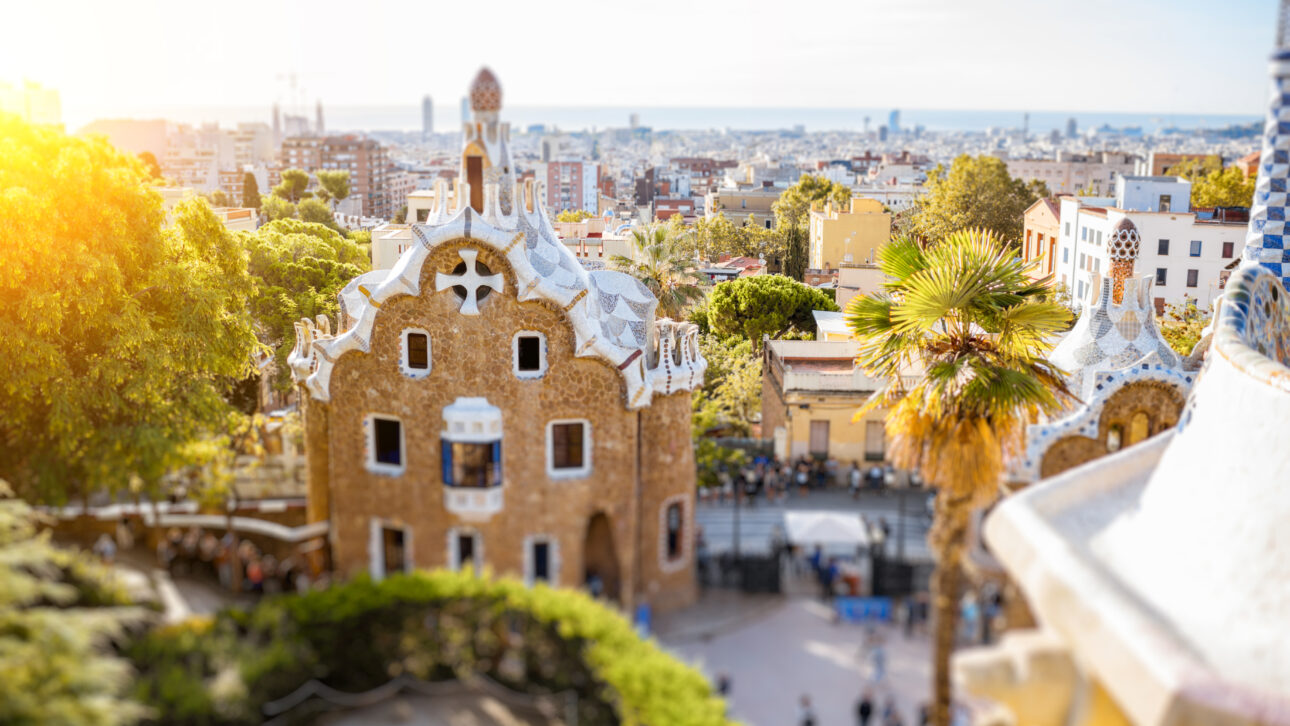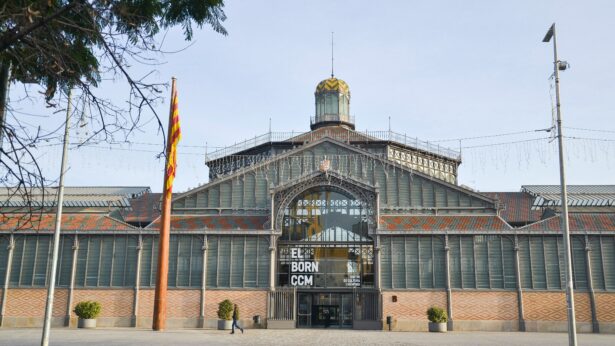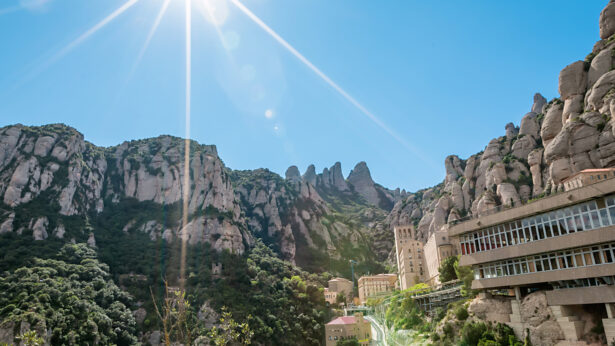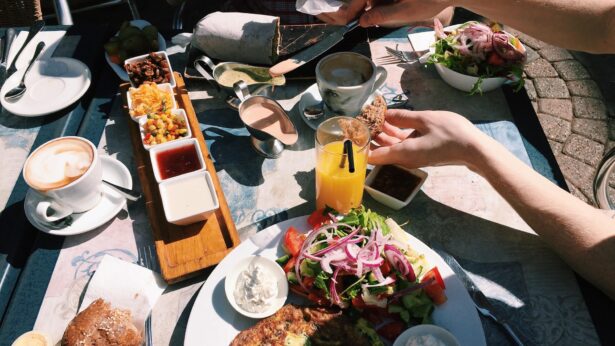Barcelona, a city that unfolds like a vibrant canvas of art and culture, is world-renowned for its extraordinary architectural richness. At the heart of this visual fascination lies Catalan Modernism, an artistic movement that transformed the city’s aesthetics at the end of the 19th and beginning of the 20th century. This style, intrinsically linked to the identity of Barcelona, is a testament to innovation and creativity.
The central figure of this movement is undoubtedly Antoni Gaudí, an architect whose vision transcended mere construction to delve into the realms of the surreal and magical. Gaudí did not just conceive buildings; he created eternal symbols of a city in constant dialogue with art. Works such as the Sagrada Familia, Park Güell, and Casa Batlló are not just tourist attractions; they are pillars of a cultural legacy that continues to inspire generations.
But Gaudí was not alone in his journey towards architectural innovation. Architects like Lluís Domènech i Montaner and Josep Puig i Cadafalch also played crucial roles in shaping the urban landscape of Barcelona. With works like the Palau de la Música Catalana and Casa Amatller, they contributed to an architectural tapestry that turns Barcelona into an open-air museum of Modernism.
This blog will delve into the heart of Catalan Modernism, exploring not only Gaudí’s famous works but also uncovering hidden gems and celebrating the work of other architects who collectively have woven the architectural history of Barcelona. Join us on this journey to discover how each stone, each mosaic, and each façade tells the story of a city that lives and breathes through its architecture.
Antoni Gaudí and the Sagrada Familia
In the heart of Barcelona stands the Sagrada Familia, a Gaudí masterpiece that is much more than an architectural monument. It is a symbol of creativity and devotion that has captured the imagination of visitors from around the world. Designed by Antoni Gaudí, its construction began in 1882 and continues today, being a living testament to the constantly evolving Modernist architecture. The Sagrada Familia is not just a basilica; it is a narrative in stone and glass that tells stories of faith, nature, and architecture.
The fascinating combination of Gothic and curvilinear forms, along with its intricate use of religious and natural symbolism, makes the Sagrada Familia a unique experience. Every façade and every corner are imbued with meaning, from the birth to the passion of Christ. Gaudí’s influence on the Sagrada Familia goes beyond the aesthetic; it is an expression of his deep religiosity and love for nature, elements that define the core of Catalan Modernism.
Best Times to Visit and Recommended Tours
The best time to visit the Sagrada Familia is early in the morning or late in the afternoon when sunlight enhances its stained glass, creating a spectacle of colors inside the basilica. It is recommended to book guided tours in advance, especially those that include access to the towers, from where panoramic views of Barcelona can be appreciated and Gaudí’s vision better understood.
Tips for Photographing the Sagrada Familia
To capture the essence of the Sagrada Familia in photographs, it is essential to play with light and shadows. Mornings offer a soft light that accentuates the textures of the exterior façade, while sunset provides a warm golden glow. Do not forget to explore the surroundings to find unique angles and reflect the magnificence of Gaudí’s masterpiece in your lens.
Park Güell: A Mosaic of Art and Nature
Park Güell is one of Antoni Gaudí’s most emblematic creations and a jewel of Catalan Modernism. Located on the El Carmel hill in Barcelona, this public park masterfully combines natural elements with innovative architecture. Upon entering Park Güell, one is immersed in a world where organic forms and Modernist mosaics intertwine, creating a dreamlike environment.
Gaudí designed Park Güell with the intention of merging architecture and nature. The paths meander among Mediterranean trees and structures that seem to arise from the ground like natural formations. The main plaza, with its famous undulating bench covered in mosaics, offers a panoramic view of Barcelona and the sea. The vibrant colors of the mosaics and the nature-inspired shapes make Park Güell a testament to Gaudí’s artistic genius and a place of peace and reflection.
Recommendations for Enjoying the Park:
To fully enjoy Park Güell, it is recommended to visit it early in the morning or late in the afternoon when the light is ideal for photography and the atmosphere is quieter. A walk through the less-traveled paths can reveal hidden sculptures and exceptional views. Do not forget to carry water and wear comfortable shoes, as the park has many stairs and steep paths.
Nearby Cafeterias for Resting:
After exploring Park Güell, you can relax in one of the several nearby cafeterias. ‘La Cafeteria del Parc’ offers charming views of the park with a selection of coffees and snacks. For a more local experience, ‘Bar de la Plaça’ in the nearby Gracia neighborhood is an excellent option to enjoy a coffee or a glass of wine in an authentic atmosphere.
Casa Batlló: A Jewel of Modernism
Casa Batlló, located in the heart of Barcelona, is one of Antoni Gaudí’s most fascinating creations and an essential reference point in Modernist architecture. This building is not merely a construction but a work of art that reflects Gaudí’s boundless imagination. The Modernist façade of Casa Batlló is a vibrant mix of colors and shapes, evoking the movement of water and organic nature.
Casa Batlló stands out for its innovative use of color and light, with a façade adorned with glass and ceramic fragments that create a brilliant mosaic. The wavy shapes, columns reminiscent of bones, and balconies that look like carnival masks transport visitors to a fantastic world. Symbolism is interwoven throughout the structure, from the roof representing the back of a dragon to elements evoking nature and fairy tales.
Best Time to Visit and How to Capture Its Essence in Photos:
Casa Batlló is particularly impressive during the golden hour, when sunlight enhances its vibrant colors. Sunset is also a magical time for photography, with the building’s lighting highlighting its unique details. To capture its essence, it is advisable to experiment with different angles and play with light and shadows to highlight its Modernist features.
Local Bars to Experience Nearby Nightlife:
After visiting Casa Batlló, you can enjoy Barcelona’s lively nightlife in local bars. “El Nacional” offers a unique experience with several restaurants and bars under one roof, perfect for tasting local gastronomy in a historical setting. Another option is “Boca Chica,” an elegant and sophisticated bar that serves innovative cocktails and is just a few steps from Casa Batlló.
Lluís Domènech i Montaner and the Palau de la Música Catalana
Lluís Domènech i Montaner, a pillar in the history of Catalan Modernism, left an impressive legacy, but none of his works are as acclaimed as the Palau de la Música Catalana. This concert hall, located in the heart of Barcelona, is not just a cultural reference point but also an architectural masterpiece. The Palau, declared a World Heritage Site by UNESCO, is a dazzling display of light, color, and creativity, representing the innovative spirit of Catalan Modernism.
This emblematic building stands out for its ornamental façade and its impressive concert hall, with a stained glass ceiling that allows natural light to flood the space. Every detail, from the mosaics to the sculptures, reflects the artistic vision of Domènech i Montaner and his ability to merge functionality and aesthetic beauty. A few steps from the Musik Boutique Hotel, the Palau de la Música Catalana is an architectural treasure accessible to the hotel’s guests, offering an unforgettable cultural experience very close to their accommodation. More information about its proximity can be found at Musik Boutique Hotel.
Tips for Visiting and Concert Experiences:
It is recommended to book tickets for concerts in advance, as the Palau is a very popular venue. Attending a concert here is a magical experience, where the acoustics and ambiance create an unparalleled environment. Guided tours are also available, offering a deep insight into the history and architecture of the building.




